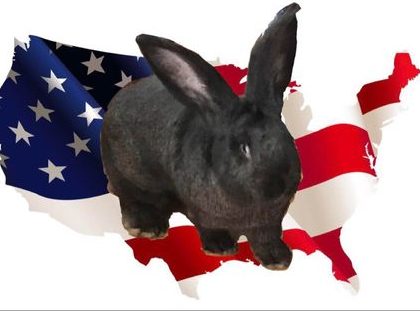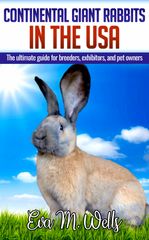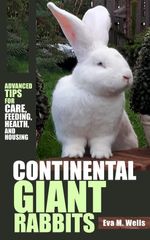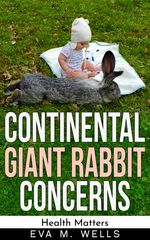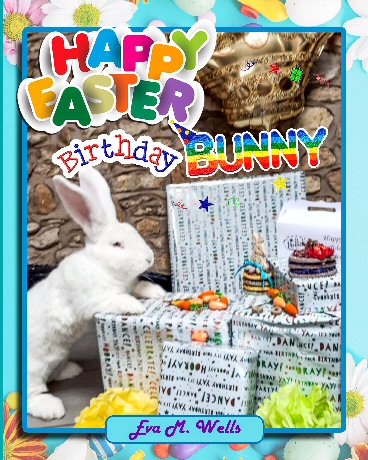
You may SAVE a copy of this file for your personal use. However it may not be changed, shared, or reproduced in any way that is not congruent with National Copyright Laws, set forth by the US National Library of Congress or otherwise permitted per written/signed/dated permission of Continental Giants in USA Group, per Keith Brown.
This document represents the desired and required breed traits according to the Continental Giants within the United States – otherwise known as “The American Giant” (per EW/11/1/18). This is not in any way related to or in association with the entities known as the American Rabbit Breeders Association (ARBA) or the British Rabbit Counsel (BRC).
WORKING STANDARDS
The Continental USA Giant rabbit is considered a large rabbit. It carries equal portions of
weight, muscle, extreme bone density and overall size. The rabbit exhibits a well balanced body
which compliments its noted physical characteristics. The body can be defined as a cylindrical
form.
This exceptional rabbit should be posed in a “sitting” position, with even amounts of body weight
resting in both, the full powerful hind quarters which should rest flat on the surface, and, the
broad shoulders to be in an upright stance that is supported by visible straight, heavy boned
front legs.
A senior Continental USA Giant rabbit should measure in length (from the tip of the muzzle to
rear of hindquarters), at a minimum of 27 inches.
The Body Type shall not reflect a defined arch. A very slight rise may be noticed over the
hindquarters, however, it should not distract from the desired cylindrical overall body form.
The head and ears shall be of size to proportionally support the impressive massive body type.
The buck should exhibit a larger, more chiseled and broader skull structure than that of the doe.
Neither sex should exhibit a pinched muzzle, although, the doe’s skeletal structure may appear
slightly more refined.
The ears of the Continental USA Giant rabbit are the jewels of this breed. Ear length (from base
to tip of the ear) should be no less than 7 1⁄2 inches for a senior rabbit. The ear base should be
substantial and strong enough to carry the weight and structure of the broad ears. Ideally, one
or two fingers placed between the ears, at the ear base, offers satisfactory space for a well
balanced foundation sufficient to support the hefty weighted ears. The ears should stand erect,
and, should be visibly and physically thick and evenly covered in hair. The shape of the ear
should be broad and noticeably rounded at the tip. Basic expectation – ear length should
represent approximately 25% of body length.
The coat of the rabbit should create a “bounce roll “ when rubbed in the opposite direction of the
natural lay. A dense undercoat should be visible. Guard hairs are permissible, however, an
excessive amount of guard hairs is not desirable. The condition of the coat should be clean,
provide sheen and be a soft feel when touched. Excessive hair length is not desired.
AGE CLASSES AND WEIGHTS
Senior Bucks – 10 months of age and over – over 13.8pounds
Senior Does – 10 months of age and over – over 14.8 pounds
Intermediate Bucks and Does – 6 to 10 months of age. (note: Intermediate age rabbits can move to Senior class if weight is equal to the minimum weight of the appropriate Senior class.)
Junior Bucks and Does – 3 – 6 months of age.
Juvenile Bucks and Does – birth – 3 months of age
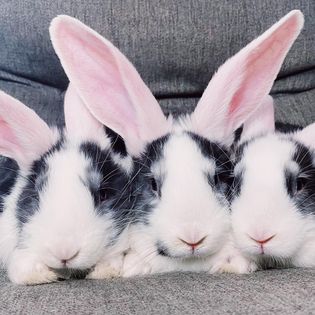
COLORS OF THE USA CONTI STANDARDS
DOWNLOAD THE FILE ABOVE FOR FULL DETAILS OF WORKING STANDARDS
You may NOT change, share, or reproduce any photo or description – in any way that which is not congruent with National Copyright Laws, set forth by the US National Library of Congress or otherwise permitted per written/signed/dated permission of Continental Giants USA Group, per Keith Brown.
BLACK
A solid deep and dark hue of black which continues down the hair shaft to the undercoat.
Undercoat may slightly reflect a deep blue color, however, not sufficient in hue tone to
alter the overall blackness of the coat.
Toenails: Black or darkened.
Eyes: Brown
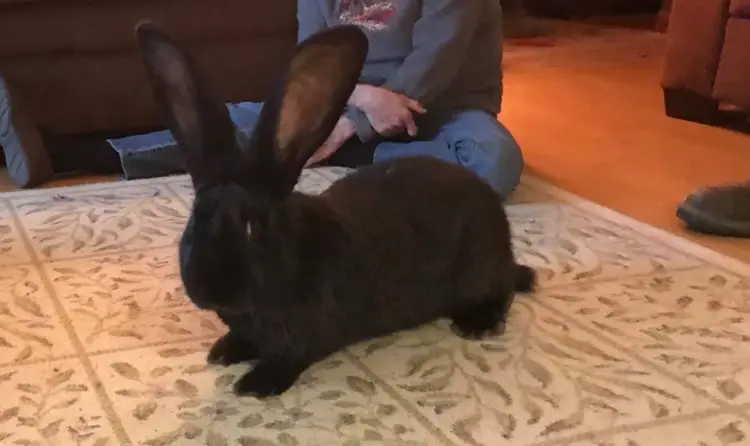
BLUE
A solid deep hue of blue which continues down the hair shaft to the undercoat.
Undercoat may slightly reflect a black or deep brown hue, however, not sufficient in color
to alter the overall slate blueness of the coat.
Toenails: Darkened / Shaded
Eyes: Slate Blue or Brown
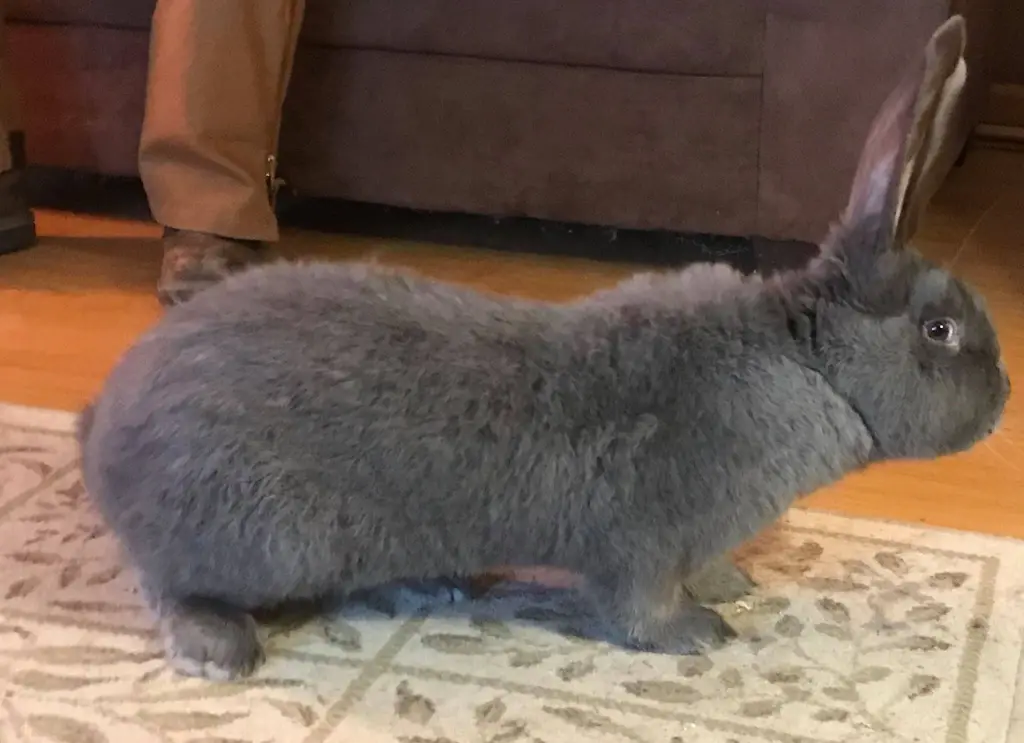
AGOUTI
An agouti colored coat will exhibit more than one color on the hair shaft. However, a predominate color will be visible over the mass of the coat, and that color will determine the sub-category that the rabbit will be placed.
Darkened / Shaded
Eyes: Brown or Slate Blue
- Steel – A deep mixture of black, medium and light grays that when viewed overall reflect a strong darkened shade of gray.
- Gray – An even toned mixture of medium and lighter gray colors, with perhaps an undercoat of darker shades of gray, that when viewed overall produces a light gray shade.
- Red – A tonal range of color that includes brown, perhaps a blackened undercoat, and with a deep red cast on the upper portion of hair shafts. When viewed overall a brownish-red cast of color illuminates from the combined hues. Toenails: Darkened / Shaded
Eyes: Brown or Slate Blue
- Brown – A tonal range of color that includes multiple shades of brown , perhaps a blackened undercoat, mixed on the hair shafts with a slight tan appearance but overpowered with a defined brown colored cast. Toenails: Darkened / Shaded
Eyes: Brown or Slate Blue
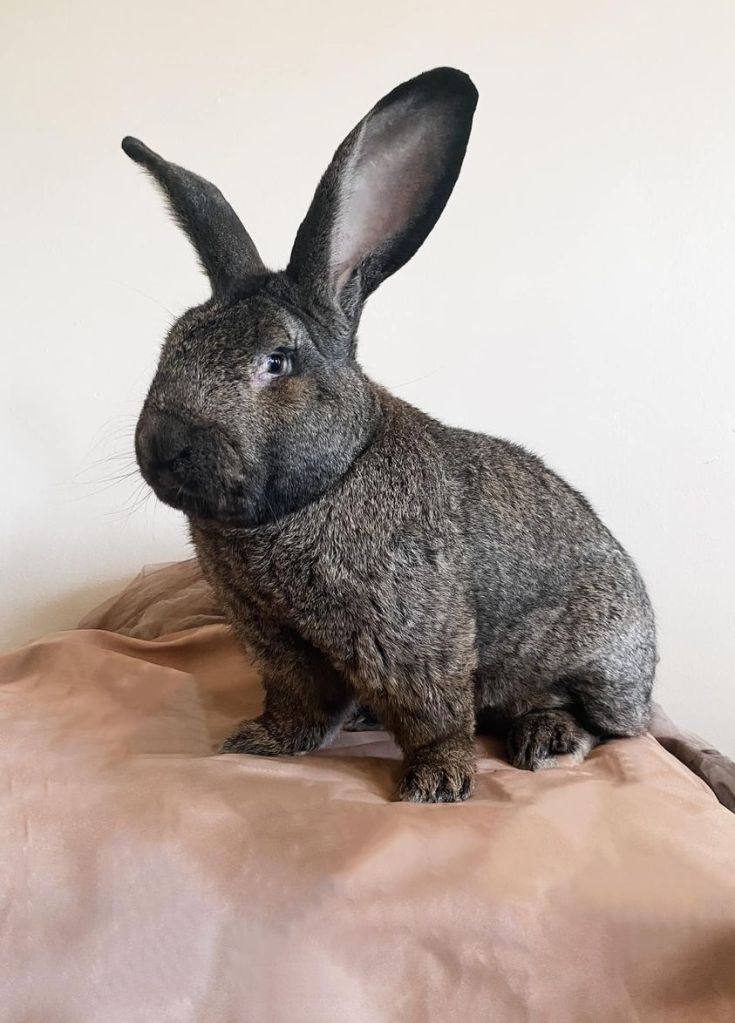
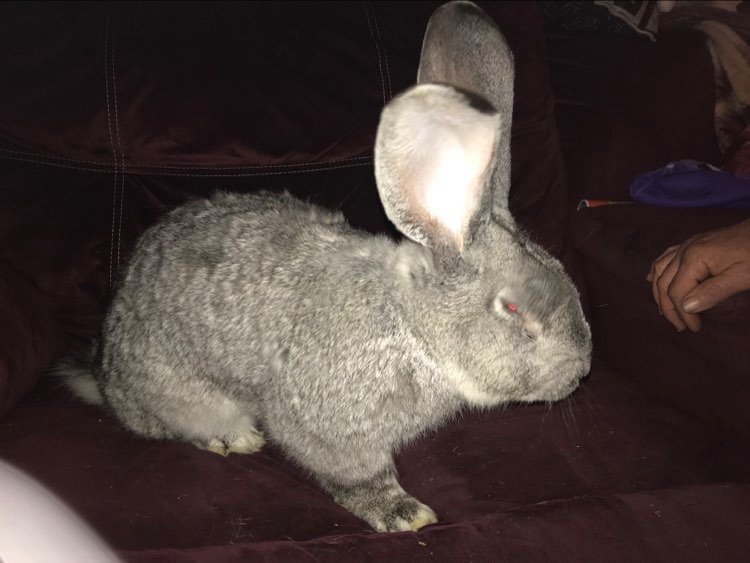


OPAL
An opal colored coat will appears as a light colored blue, often with a lavender colored
overcast. Often the hair shafts will reveal a subtle undercoat of deep colored tan. However, the overall color of the coat reflects a medium to light blue/lavender color.
Toenails: Darkened / Shaded
Eyes: Brown or Slate Blue
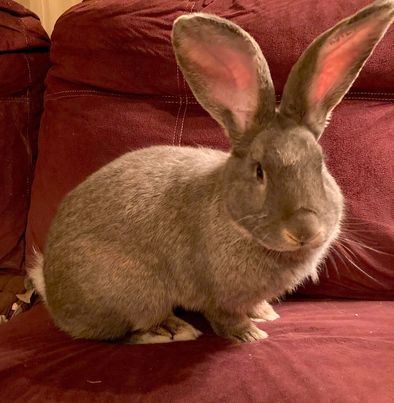
YELLOW OCHRE
A color that covers a range of hues but all include a yellow color of various shades. Yellow Ochre ranges from a bright (almost washed out) yellow to a deep, golden hue often viewed in colorful sunsets. However, the color of each rabbit must be consistent over the entirety of the rabbits coat. Various shades within the same coat are not desirable, forgiving times of molt.
Toenails: Darkened / Shaded
Eyes: Brown or Tan

WHITE
A clean, crisp, vibrant shade that represents a sense of refreshment and newness. The entire coat shall include no other color.
Toenails: White
Eyes: Red or Blue
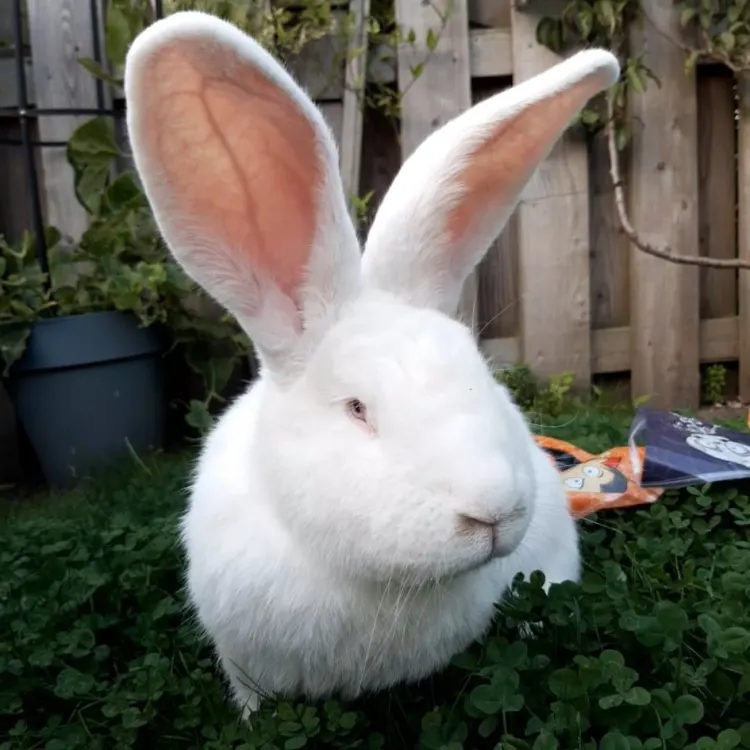
BROKEN
A Broken color shall coordinate with the one of the color categories previously mentioned. White shall always be a part of the combination of “Broken”. The color portion of the rabbit shall not exceed 65% of the overall coat. The remainder shall be white.
***White Eared rabbits shall be placed in this category.
Toenails: Darkened / Shaded
Eyes: Coordinates with Color Categories listed herein
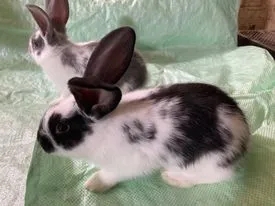
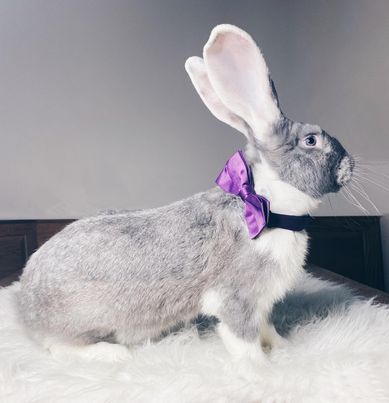
FAULTS
Faults will be defined as characteristics that do not meet the standard guidelines
referenced herein, including others, as referenced below. Faults may be issues that determine
the level of quality and the placement of one rabbit over another when judged.
- soiled and/or uncleanliness overall condition
- lack of alertness and vitality,
- sore hocks
DISQUALIFICATIONS
Disqualifications will be defined as issues and/or characteristics that do not meet the
standard guidelines referenced herein, including the following.
- deformity of teeth
- body deformities
- does not meet weight standards
- wry and/or broken tail
- white toenails, other than on white rabbits
- any discernible illness and/or disease
- incorrect eye color, partial or full blindness
- any alterations to the rabbits overall body type of parts thereof
- open sores, wounds, abscesses or the like
- alterations to genitals, either sex. Bucks must be intact and carry two fully descended testicles and full penis. No split penis.
DISTRIBUTION OF SHOW POINTS
35 Body Type
25 Head and Ears
15 Weight
10 Color and Eyes
10 Condition
5 Coat
The Continental USA Giant rabbit is of large proportion which exemplifies strength, weight,
brawn and muscle. Conversely, the rabbit represents an overall well – balanced and a majestic
eloquent animal.
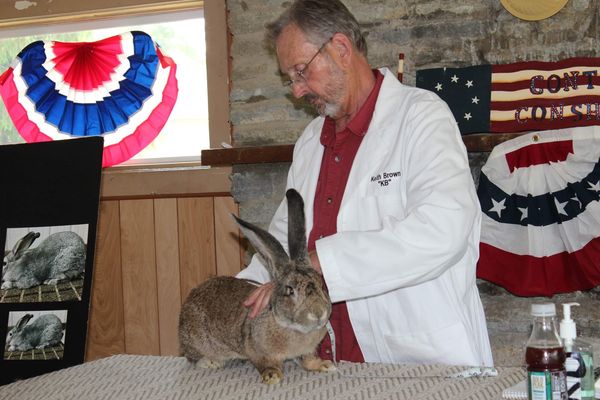
Body and Positioning
This superior animal should be posed in a “sitting” position, with even amounts of body weight
resting in both the full, powerful hind quarter which rests flat on the surface, and, the broad
shoulders to be in an upright stance that is supported by visible straight, heavy boned front legs.
An adult Continental USA Giant rabbit should measure in length (from the tip of the muzzle to
rear of hindquarters), at a minimum of 27 inches.
The Body Type shall not reflect a defined arch. However, a slight rise may be noticed, and also
be appropriate, to accentuate length of the rabbit’s massive hindquarters.
Head
The head and ears shall be of size to proportionally support the impressive body type. The buck
will exhibit a larger, more chiseled and massive skull structure than that of the doe. Neither sex
should exhibit a pinched muzzle, although, the doe’s skeletal structure may appear slightly more
refined.
Ear
The ears of the Continental USA Giant rabbit are the crown and jewels of this breed. Ear length
(from base to tip of the ear) should be no less than 7 ½ inches on an adult. The ear base should
be substantial and strong enough to carry the weight and structure of the ears. Ideally, one or
two fingers placed between the ears, at the ear base, offer space for a satisfactory foundation for
an excellent support base for the hefty weighted ears. The ears should stand erect. And,
should be visibly and physically thick and evenly covered in hair. Basic expectation – ear length
should represent approximately 25% of body length.
Coat / Fur and Weight
The coat of the rabbit should create a “bounce roll “ when rubbed in the opposite direction of the
natural lay. A dense undercoat should be visible. Guard hairs are permissible, however, an
excessive amount of guard hairs is not desirable. The condition of the coat should be clean,
provide sheen and be a soft feel when touched.
Weights for rabbits are under study and review, and will be further defined.
Discover the answers to the questions you have about the Continental USA Giant Rabbits
click each book to buy & please leave a kind Amazon review for each one
This is a 3-part series about the Conti as a breed. Books 1 and 2 are written in a very unique way, where alternating chapters are stories of the preview chapter, told from the rabbit’s point of view. The purpose of this is to subconsciously enhance what you learn by the means of emotional attachment and repetition. Many Veterinarians, Psychologists, Therapists, Counselors, Breeders, and Pet Owners have provided rave reviews for this style of writing. I’m sure you will join the many who equally LOVE them… but if you are one of the very few who don’t, it’s no big deal – simply skip the even-numbered chapters and then you will be happy too. Book 3 is structured as a textbook, only relating to health concerns of the breed, and does not include the storyline.
Kids love bunnies and stories… here’s both – Staring *JESTER* the giant bunny

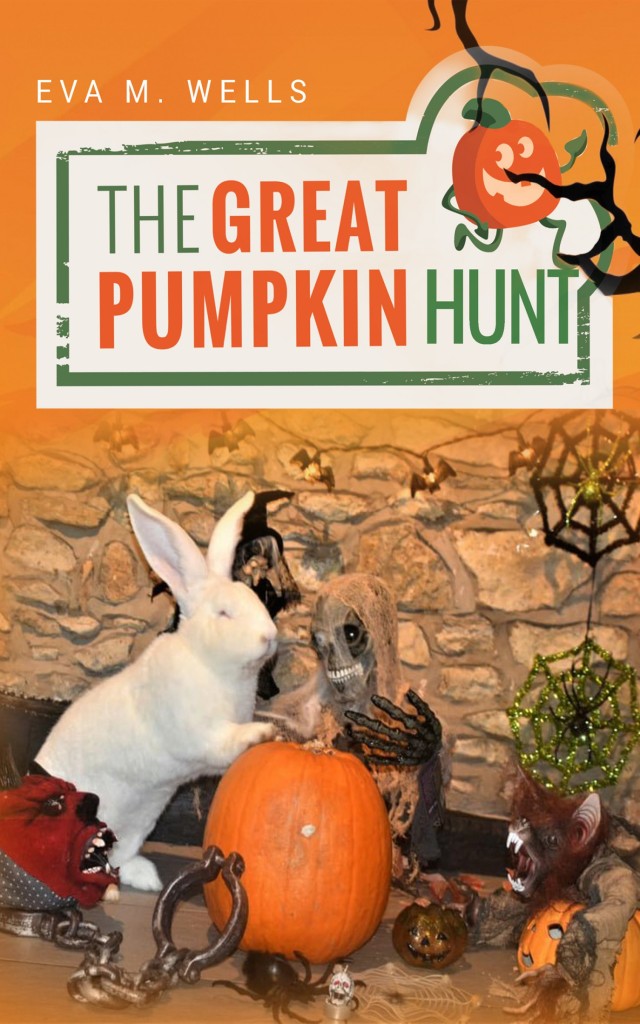
*As an amazon affiliate, I may earn a very small commission for purchase with links
